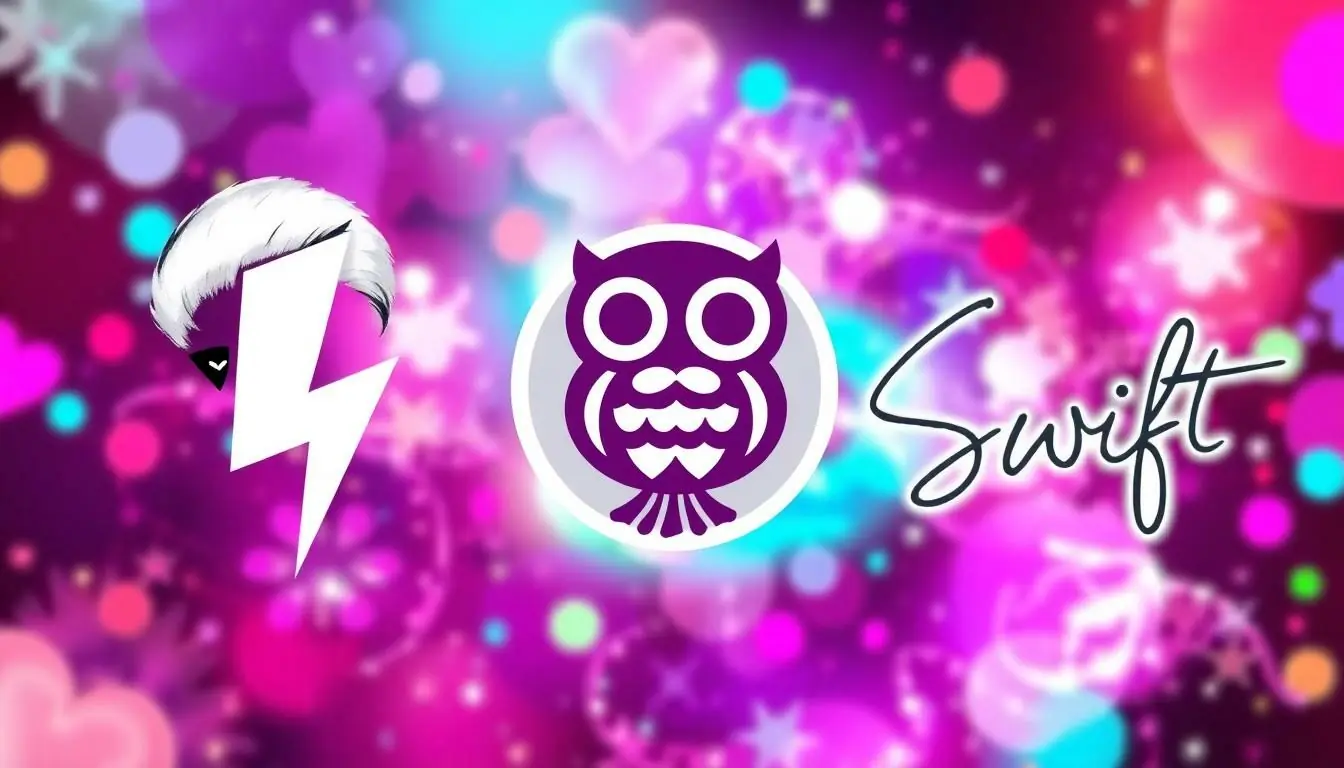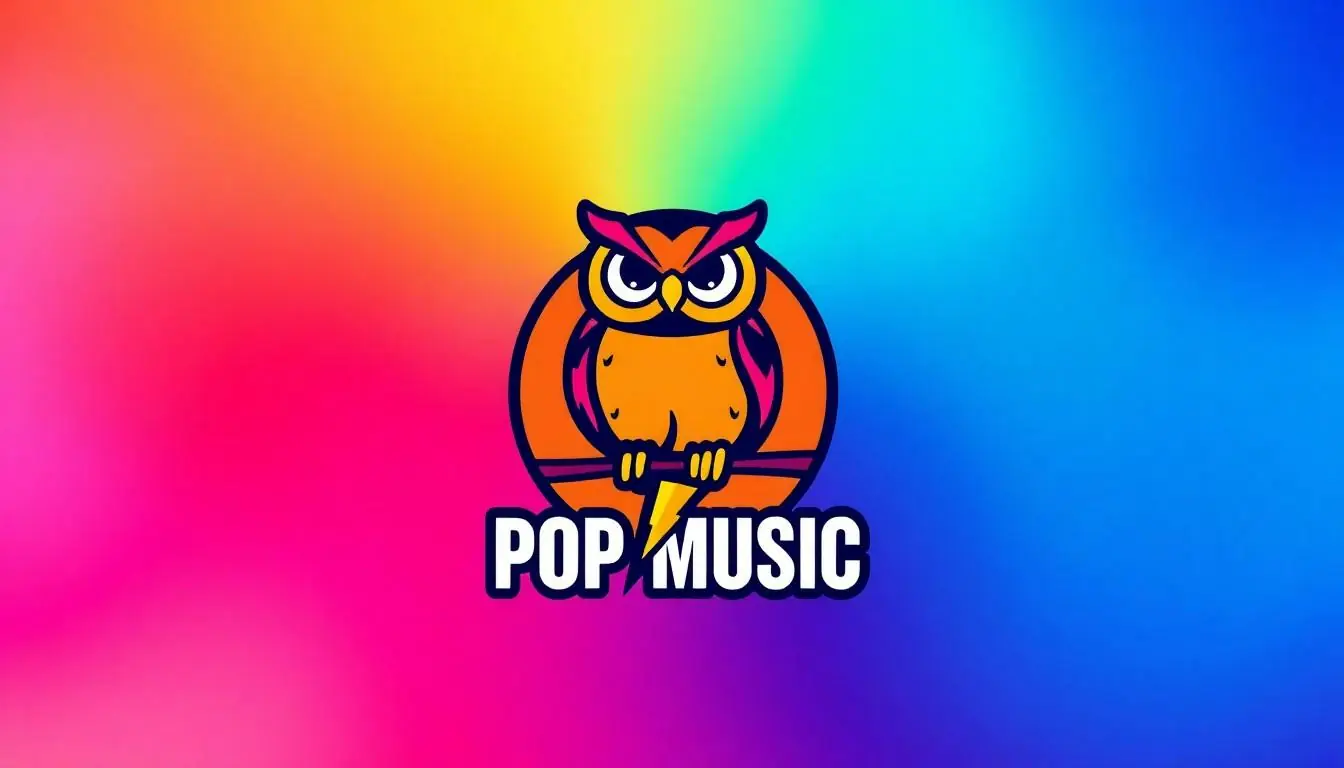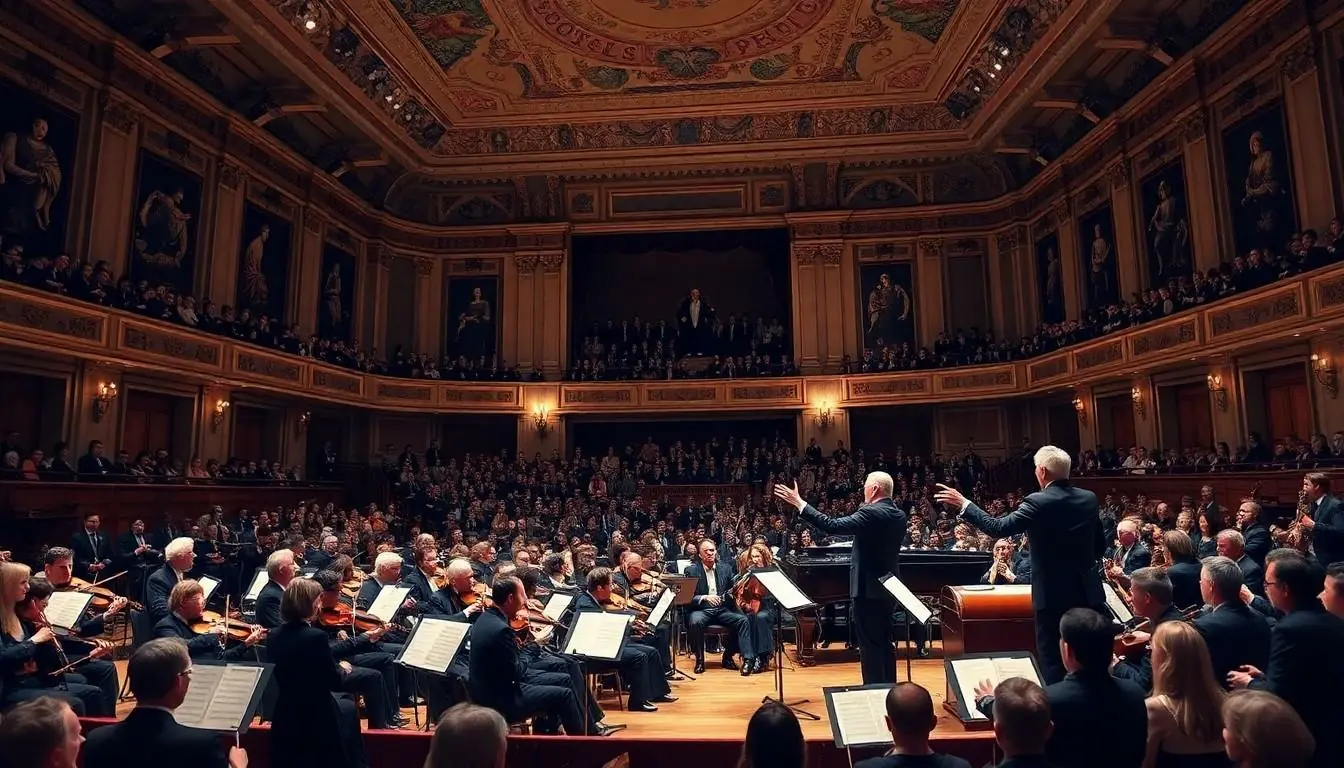In the vibrant world of pop music, a logo isn’t just a pretty picture; it’s a badge of identity. Think of it as the glittering cherry on top of a chart-topping sundae. Whether it’s the iconic swoosh of a well-known artist or the colorful splash of a fresh new band, these logos capture the essence of the music they represent. They stick in your mind like that catchy chorus you can’t shake off.
But what makes a pop music logo truly pop? It’s all about the blend of creativity, culture, and a sprinkle of marketing magic. As artists strive to stand out in a crowded industry, their logos become a visual anthem, telling fans who they are before a single note is played. Dive into the colorful universe of pop music logos and discover how these designs resonate with fans and elevate artists to superstar status.
Table of Contents
ToggleUnderstanding Pop Music Logo
Pop music logos are crucial elements of an artist’s branding strategy. They serve as recognizable symbols that encapsulate the spirit of their music.
Definition and Significance
A pop music logo is a visual representation of an artist or band, often including unique design elements that convey personality. Such logos play a significant role in building an artist’s identity. Effective logo designs resonate with fans, creating strong connections and fostering brand loyalty. Logos also enhance marketing efforts, establishing a memorable presence in the competitive music landscape. Examples include Lady Gaga’s lightning bolt and Drake’s owl, both instantly recognizable and deeply tied to their respective brands.
Historical Evolution
Logos in pop music have evolved alongside the music itself. Early logos emerged in the 1950s, reflecting the rock and roll culture. Over the decades, logos consistently adapted to trends in art and design. The 1980s introduced vibrant colors and geometric shapes, matching the era’s energetic style. Meanwhile, the rise of digital media in the 2000s transformed logo design into a more streamlined aesthetic, with simplicity gaining popularity. Today, logos not only represent artists but also encompass broader cultural movements, reflecting changes in society and music trends.
Iconic Pop Music Logos

Pop music logos often capture the essence of artists, promoting recognition and connection with fans. Such logos vary widely in design and concept, yet each serves as a unique identity marker in the music industry.
Examples of Famous Logos
Lady Gaga’s lightning bolt stands out as a bold representation of her avant-garde style. The simplicity of the logo makes it instantly recognizable. Drake’s owl encapsulates his brand authenticity, symbolizing wisdom and insight. These examples illustrate how effective logos carry meaning beyond visuals, resonating with diverse audiences. Taylor Swift’s signature, with a clean and elegant design, reflects her evolution as an artist. Each logo not only conveys a distinctive image but also contributes significantly to the respective artist’s identity.
Impact on Brand Identity
Logos play a crucial role in establishing and maintaining brand identity. A well-designed logo fosters a deep connection between the artist and their audience. Artists like Ariana Grande use their logos to convey key aspects of their music and personality. Consistency in visual identity enhances audience recognition and loyalty. The right logo can reinforce the artist’s message and aesthetic, elevating their presence in a crowded market. Moreover, these logos often evolve in tandem with the artist’s career, adapting to new sounds and styles while retaining core elements.
Design Elements of Pop Music Logos
Design elements in pop music logos play a crucial role in conveying an artist’s identity and style.
Color Schemes and Typography
Color schemes in pop music logos evoke emotions and communicate themes associated with the artist’s music. Bold colors like red and electric blue attract attention, while softer hues may represent vulnerability or nostalgia. Typography complements colors by setting the tone of the logo. Unique fonts may convey a playful spirit or a sophisticated vibe, enhancing the overall aesthetic. Brands like Dua Lipa utilize contrasting colors and modern typography, creating a striking visual identity that resonates with fans. Each element works together, forming a visual language that reflects the artist’s brand.
Visual Symbols and Iconography
Visual symbols and iconography provide instant recognition for pop music logos. Symbols often signify an artist’s core message or persona. Lady Gaga’s lightning bolt, for instance, symbolizes power and creativity. Iconic imagery can relate to the artist’s musical style or personal experiences. Taylor Swift employs a simple but elegant signature that reflects her narrative-driven approach to music. Iconography must remain relevant and adaptable, evolving with the artist while maintaining strong associations. A well-chosen symbol helps forge a deeper connection with the audience, enhancing brand loyalty and recognition.
Trends in Pop Music Logo Design
Pop music logos continue to evolve in response to cultural shifts and technological advancements. Artists and designers embrace creativity in their visual identities, often utilizing bold colors and unique typography to stand out.
Current Trends
Minimalism gains popularity among pop music logos. Simplified designs offer clarity and impactful messages. Gradients and vibrant color schemes draw attention, while retro aesthetics evoke nostalgia. Iconic symbols like lightning bolts or distinctive initials remain prevalent, reinforcing brand recognition. Furthermore, brands leverage digital capabilities to create animated logos, enhancing engagement on social media platforms. This dynamic visual approach attracts younger audiences, creating a more interactive relationship between artists and fans.
Future Predictions
As technology advances, pop music logos are likely to become even more integrated with augmented reality experiences. Interactive elements may engage fans in new ways, transforming logos into immersive brand experiences. Additionally, sustainability trends could influence design choices, with a focus on eco-friendly materials and practices. Customization options might allow fans to personalize logos, fostering a deeper connection with the artists. Popular culture’s rapid changes will also shape how logos adapt, ensuring they resonate with evolving audience preferences.
Pop music logos are more than mere visuals; they embody the spirit and identity of artists while fostering connections with fans. As the industry evolves, these logos continue to adapt to cultural shifts and technological advancements, reflecting the dynamic nature of pop music itself.
With trends leaning towards minimalism and interactive designs, the future of pop music logos promises even greater engagement. Artists and designers are poised to create symbols that not only represent their music but also resonate deeply with audiences. Ultimately, a well-crafted logo can be a powerful tool in an artist’s branding arsenal, enhancing recognition and loyalty in an ever-competitive landscape.




